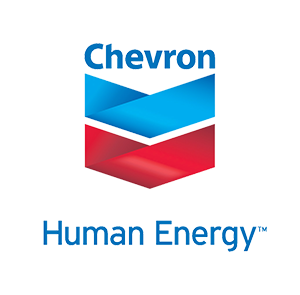Science & Engineering Practices
Each of the eight SEPS in the NGSS has sub-themes that are developed across the grade-bands. For the most part, these are addressed implicitly in Next Gen PET activities/lessons by simply having students engage in them. (A few selected SEPs are addressed explicitly in Units M and SE, and they are indicated in the Target Ideas for those particular units.) The table below shows the SEP sub-themes that students are expected to engage in to a significant degree in both the studio- and lecture-style formats of the material (X) or only in the studio-style format (S). (A unit key is available below the table.)
| Code | Narrative | Unit Addressed | |||||||||
|---|---|---|---|---|---|---|---|---|---|---|---|
| Practice 1: Asking Questions and Defining Problems | M | SE | EM | PEF | FM | CF | WS | L | PC | CR | |
| Practice 1.C | Ask questions that challenge the premises of arguments, interpretations of data, or suitability of an engineering design. | x | x | x | x | x | |||||
| Practice 2: Developing and Using Models | M | SE | EM | PEF | FM | CF | WS | L | PC | CR | |
| Practice 2.A | Evaluate the merits and limitations of models in order to select one that best fits the available evidence. | x | x | x | x | ||||||
| Practice 2.B | Based on evidence, develop and revise models that can be used to describe phenomena and make predictions. | x | x | x | x | x | x | x | x | x | x |
| Practice 2.C | Use a model to make predictions, test ideas, and solve problems. | x | x | x | x | x | x | x | x | x | x |
| Practice 3: Planning and Carrying Out Investigations | M | SE | EM | PEF | FM | CF | WS | L | PC | CR | |
| Practice 3.C | Conduct investigations and/or make observations to provide evidence that addresses scientific questions. | x | x | x | x | x | x | x | x | x | x |
| Practice 4: Analyzing and Interpreting Data | M | SE | EM | PEF | FM | CF | WS | L | PC | CR | |
| Practice 4.A | Record, analyze, and interpret data in varied formats to address scientific questions. | x | x | x | x | x | x | x | |||
| Practice 4.B | Analyze data using logical reasoning and/or mathematical tools to address scientific and engineering questions. | x | x | x | x | x | x | x | x | ||
| Practice 4.D | Compare and contrast data from different sources to identify similarities and differences. | x | x | x | x | x | x | x | |||
| Practice 4.E | Use data analysis in the optimization of an engineering design. | s | x | ||||||||
| Practice 5: Using Mathematics and Computational Thinking | M | SE | EM | PEF | FM | CF | WS | L | PC | CR | |
| Practice 5.C | Use mathematical representations to support claims and/or explanations. | x | x | x | x | x | x | ||||
| Practice 5.D | Use mathematical tools to address scientific and engineering questions and solve problems. | x | x | x | x | x | x | x | |||
| Practice 6: Constructing Explanations and Designing Solutions | M | SE | EM | PEF | FM | CF | WS | L | PC | CR | |
| Practice 6.A | Construct explanations based on evidence and models that predict and describe phenomena. | s | s | s | s | s | s | s | s | ||
| Practice 6.B | Construct explanations using ideas that emerge from (class) consensus. | s | s | s | s | s | s | s | s | s | s |
| Practice 6.C | Apply scientific reasoning to assess how data supports an explanation or conclusion. | x | x | x | x | x | x | x | |||
| Practice 6.D | Use scientific ideas to develop/refine/optimize an engineering design. | x | s | x | x | x | x | ||||
| Practice 7: Engaging in Argument from Evidence | M | SE | EM | PEF | FM | CF | WS | L | PC | CR | |
| Practice 7.A | Use evidence to evaluate the claims and reasoning used in an argument. | x | x | x | x | x | |||||
| Practice 7.B | Respectfully provide and/or receive critiques on scientific arguments based on reasoning and evidence. | x | x | x | x | x | x | x | x | x | x |
| Practice 7.C | Use data and evidence to construct/support an argument or counter-argument. | x | x | x | x | x | x | x | x | x | x |
| Practice 7.D | Make claims about engineering design solutions based on evidence and scientific principles. | x | s | x | s | x | x | s | |||
| Practice 8: Obtaining, Evaluating, and Communicating Information | M | SE | EM | PEF | FM | CF | WS | L | PC | CR | |
| Practice 8.D | Communicate information in multiple formats (e.g. written, orally, diagrams ...) | x | x | x | x | x | x | x | x | x | x |
Unit key : M : Developing a Model of Magnetism; SE : Developing a Model of Static Electricity; EM : Energy Model of Interactions; PEF : Potential Energy and Fields; FM : Force Model of Interactions; CF : Combinations of Forces; WS : Mechanical Waves and Sound; L : Light and Color; PC : Physical Changes; CR : Chemical Reactions.




